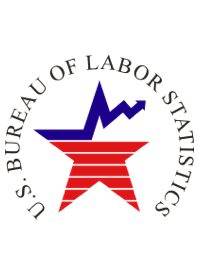
In a new, first-ever analysis, the Labor Department’s Bureau of Labor Statistics (BLS) issued a report showing that there were 3.1 million “green” jobs in the United States in 2010, or 2.4 percent of the nation’s overall employment. Green Goods and Services jobs, the BLS indicates, “are found in businesses that produce goods and provide services that benefit the environment or conserve natural resources.”
The agency compiled its data by targeting 333 industries, while observing five broad classifications of production and services:
- Energy from renewable sources
- Energy-efficient equipment, appliances, buildings or vehicles, or items that improve their efficiency or improve the efficiency of energy distribution
- Pollution reduction, recycling, and reuse
- Organic agriculture and sustainable forestry
- Government administration, education, training, and advocacy
Critics note that this broad definition could ignite some controversy, as it likely includes the production of energy-efficient batteries, appliances, trash collectors, municipal bus drivers, and presumably, workers who are tasked with cleaning up around coal mines and oil rigs. The agency’s green-jobs project even conceded that “there is no widely accepted definition” of an environmentally-conscious job.
A nuclear power plant is considered green because it generates energy without emitting harmful greenhouse gases, affirmed Rick Clayton, head of the BLS’ Division of Administrative Statistics and Labor Turnover.
The BLS analysis is modeled similarly to a study released last summer by the Brookings Institution, which estimated that 2.7 million Americans work in the “clean economy.” Contrary to what many critics have affirmed, Mark Muro, a chief author of the Brookings report, said Thursday that the Labor Department’s study offers firm estimates on the environmental sector, which until now have been loosely defined. “The B.L.S. data does not include a sense of growth in the sector, but it provides a useful snapshot and reaffirms that this is a modest-sized, heavily manufacturing-oriented set of activities that can be measured,” Muro asserted.
“The BLS has far more resources than any think tank can bring to bear on this kind of economic study,” echoed Jonathan Rothwell, another author of the Brookings report. “They’ve done it in a way that experts agree is the best possible way, because it is attached to the way we measure the economy across all kinds of sectors. Their long expertise … does give it a certain imprimatur that is at least notable.”
Muro did, however, concede that the numbers will provide ammunition to those on both sides of the green-jobs debate, as it offers a reality check against predictions and promises that now seem to have been distorted and embellished.
Cai Steger, an energy-policy analyst at the environmental group Natural Resources Defense Council, says the report arrives at a critical time in American politics. “As the conversation politically has grown contentious,” Steger asserted, it’s essential “to add data and facts to the conversation.”
In the BLS report, of the 3.1 million green jobs it cites for 2010, the private sector had 2.3 million, while the public sector had roughly 860,000. The utilities industry, which embodies both nuclear and hydroelectric power generation, harbored the majority of green jobs (12 percent), while the construction industry placed second at 6.8 percent. Specifically, manufacturers of solar panels, hybrid cars, and other clean-energy products comprised a bulky portion of the jobs.
The Obama administration has been a staunch advocate of government job-creation, while heavily emphasizing various environmental sectors of the economy. President Obama and his Democratic acolytes have doled out billions of dollars to prop up the clean-energy industry, including $100 billion in his 2009 economic stimulus package. Moreover, the President set a lofty goal for the United States to employ five million people in green jobs, which according to the Labor Department’s report, was a rather ambitious objective.
Republicans and other critics have pointed to the solar industry as proof that federally-subsidized loans and grants have largely been taxpayer-financed boondoggles that are explicitly designed to funnel government dollars into the hands of favored industries and companies — while generating very few jobs.
Solar panel-maker Solyndra, for example, secured a $535-billion loan guarantee from Obama’s Energy Department to create and maintain hundreds of green jobs. The President hailed the company during a visit to its facility in May 2010, branding it as the poster child for clean energy. “Companies like Solyndra are leading the way toward a brighter and more prosperous future,” he declared during the visit. But the solar firm filed bankruptcy last September, resulting in the immediate layoff of 1,100 workers.
Of course, Solyndra is just one of several examples. As The New American reported last August:
Seattle reaped the benefit of a $20-million federal grant to weatherize homes in one of America’s “greenest” cities, and 16 months later, a whopping 14 jobs were created — making the cost per job a wondrous $1,428,571. “The jobs are not there,” Todd Myers, author of the book Eco Fads, told Fox News. “So we’re training people for jobs that don’t exist.”
The Energy Department dished out another $1.2-billion loan to Sun Power to build the California Valley Solar Ranch in San Luis Obispo County, a project that netted 15 permanent jobs — or $80 million per job. The solar firm reported $150 million in losses during the first half of last year and its debt reached nearly 80 percent of its market value by October.
Indeed, the Energy Department under Obama’s tenure has been plagued with a myriad of “green” investment failures:
All in all [according to a January report by CBS News], 12 green energy companies are in financial disorder after collectively receiving more than $6.5 billion in government assistance, five of which have already filed for bankruptcy, including Solyndra, Beacon Power, SpectraWatt, Evergreen Solar, and AES’ subsidiary Eastern Energy. According to CBS News, these green-tech ventures were junk-bond-rated companies with red flags planted all over them.
Although the BLS report does not include new jobs added (or subtracted) in 2011, when considering the failings of Solyndra and other clean-energy firms, Obama’s ambitious plan for green-job growth has seemingly fallen embarrassingly flat.



